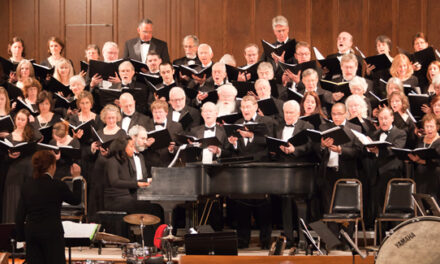The final program in the Duke Performances piano recital series was nothing less than an apotheosis, for how often does one have the opportunity to hear, in concert, one of today’s finest performers and interpreters of Bach play the monumental Goldberg Variations? Based on the “sold out” sign at the box office, it was clear that those able to attend Angela Hewitt‘s recital knew the answer was seldom.
Within the opening Aria, Hewitt made it clear that she would be taking the audience on a journey of exploration, a tour, for many, of familiar ground, during which she would highlight features of a musical landscape that other “guides” have either overlooked, or at least viewed differently. Within the first minute, we heard surprising staccatos, tempo rubato, and observance of all repeats. It was clear this performance would be as much about interpretation as technique.
Hewitt’s interpretative approach had many levels. From the articulation of an individual note, to the rhythm of a particular phrase, to the character-essence of each variation, Hewitt obviously spent (probably spends) considerable time contemplating the possibilities that the Goldberg Variations offer. For me, the most enjoyable aspect of her performance was at the character level. In Variation 7, she found a flirtiness I’ve never heard before; in Variation 13, an almost improvisatory freedom within the dance; at the half-way point (Var. 15), a sense of being lost in the woods; and after the seriousness of Variation 21, she came creeping into Variation 22 at a quiet dynamic level, as if playful creatures were peering out of their hiding places making sure the clouds of the previous variation had passed. At her most profound, in the famous, chromatically rich Variation 25, Hewitt found a unique quality of loneliness within the dissonances.
All this is not to dismiss the awesome technical feat of performing this work, especially live. The task of scaling “Mount Goldberg” without reprieve would surely overwhelm many professional pianists (taking the repeats makes the endeavor over an hour and twenty minutes). In all but one of the most difficult variations, Hewitt was astounding. Even at breakneck speeds, one could clearly hear individual notes in vast passages of scales, which still, however, seemed effortless. Her crowning technical achievement of the evening occurred in Variation 20, during which she not only pushed the velocity limits of the human fingers, but still highlighted quirky off-beat rhythms of the descending arpeggios. I must mention that I am curious to know exactly if and when she engaged the soft pedal (her gown made it difficult to tell) – and if so, to what degree. Some passages played at pianissimo had such an ethereal quality that I wondered how the sound was generated.
The listener gets a sense of elucidation hearing Hewitt play Bach. Regardless of the tempo, the musical narrative never breaks, and through her playing one is reintroduced to repertoire one only thought one knew. Readers of CVNC should eagerly anticipate her return to Durham in January, 2010, when she will perform with the Orpheus Chamber Orchestra, courtesy of Duke Performances.











